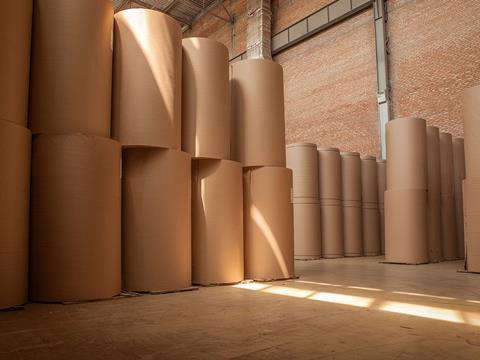
As paper fibre continues to make inroads as the packaging material of choice for brands across a range of sectors, Neil Osment, Managing Director of packaging market research company NOA, takes a look at some of the more niche products that are gaining traction.
It’s a given that cardboard and folding cartons make for fantastic fibre-based packaging products, both for the brands themselves and as a means of delivery. If we were to measure the volume they provide in ‘papermills-worth’ – in other words, how many papermills it takes to make a year’s supply for the European market - then cardboard is the equivalent of 28 to 30 papermills and folding cartons account for about 12 to 14 papermills.
So, when we are looking at niche fibre packaging products, we have to remember they are far smaller in ‘papermill’ terms than cardboard or folding cartons. But they are gaining traction, and their increasing significance and market share is, by and large, at the expense of other sectors, such as plastics or metals.
Let’s take a look at honeycomb first. This tessellated, honeycomb structure is made of paper fibre, with a fibreboard outer ‘skin’ added for strength and stability.
This honeycomb design started life some decades ago, notably in the produce market. For example, it was placed inside a corrugated cardboard box, and then filled with fruit, such as apples, with one being put into each cell, ready for transport. This was a popular way to transport fruit from the fields and to the local market and, as time went on, became a recognised pack combination for national and international distribution of fruit.
What sectors has honeycomb been moving into today? Construction has a number of applications for the use of honeycomb materials. It is sited beneath new builds (both residential and commercial) on flood plains, as it is a stable, strong and absorbent product. It is also used as an insulation material in walls and other cavities for buildings.
Honeycomb can be found as a filling material inside doors, which are finished on the outside with a laminate – a cheaper and potentially more sustainable option than solid wood doors.
The packaging industry is turning to honeycomb as a replacement for EPS (expanded polystyrene), and is increasingly being used as a fitment for the safe wrapping of electrical and white goods so they can be transported safely for long distances.
In the automotive sector, an innovation from motor racing is now becoming a more mainstream feature. Honeycomb is being used as the filling in doors, bonnets and (for racing cars) nose cones. This light, durable product helps bring strength with very little weight and, with modern day electric cars, counterbalances the heavy batteries in those vehicles.
Finally, there is a great application for both the medical and food markets, because of its insulation properties. A honeycomb structure can be placed inside an outer box, to maintain the temperature of the products within (for keeping chilled products cool, or for keeping heat in).
Another niche paper-based product is moulded fibre. This has been around for decades - think egg boxes. But it also has a great application in the fruit market too, and now we see products like avocadoes and tomatoes being sold in fibre moulded trays. Apples sit snugly in moulded fibre trays too which, because of the rigid edge of this pack type, can stack on top of one another.
As an aside, mushrooms can come in all sorts of cartons – plastic (still) but also folded cartons, or moulded fibre. The mushroom producer has an array of pack format choices nowadays!
Cast your mind back about 20 years to those original mobile phones, from brands like Motorola, Ericsson and Nokia. They were delivered in moulded fibre packaging. These days, digital streaming boxes come in less industrial looking moulded fibre; the product has evolved to be more aesthetically pleasing. In fact, it is used in a number of electrical applications.
Interestingly, some of the moulded fibre containers for electronics are being manufactured by the same companies that used to produce the original moulded plastic or foam containers; they have pivoted to meet demand from the brands, who are seeking paper rather than plastic solutions, and these companies have adapted to ensure that they don’t lose their customers.
Here’s one more niche fibre product you may have heard of too: paper bags! The usage of this revolutionary ‘new’ packaging material is growing once more. For example, Amazon now delivers products such as books in thick, brown paper bags, where once they came in solid board or corrugated envelopes. And take crisps: those grab bags are soon going to be sold in paper bags, not plastic pouches. Indeed, this is happening already.
In fact, in terms of rising demand, the paper bag is the one that is increasing the most for transporting non-food goods. They are less expensive to produce, being made from single ply, and are particularly suited for shipping clothes.
As these niche fibre products grow in popularity, more and more players, of all sizes, are investing in the sector of honeycomb, moulded fibre and paper bags, including the likes of Smurfit Kappa and Stora Enso (to name but two giants of the European packaging market).
We are currently looking at the rate at which these niche products are gaining market share. Back in 2021, we knew honeycomb, for example, was growing at an estimated +20 per cent per year, although this was in the middle of the Covid uplift. To use our papermill analogy, at that point it was using one good-sized papermill worth. For moulded fibre, the market is about five papermills-worth, four of which will be dedicated to eggbox production.
If you liked this story, you might also enjoy:
How are the top brands progressing on packaging sustainability?
The ultimate guide to global plastic sustainability regulation












No comments yet